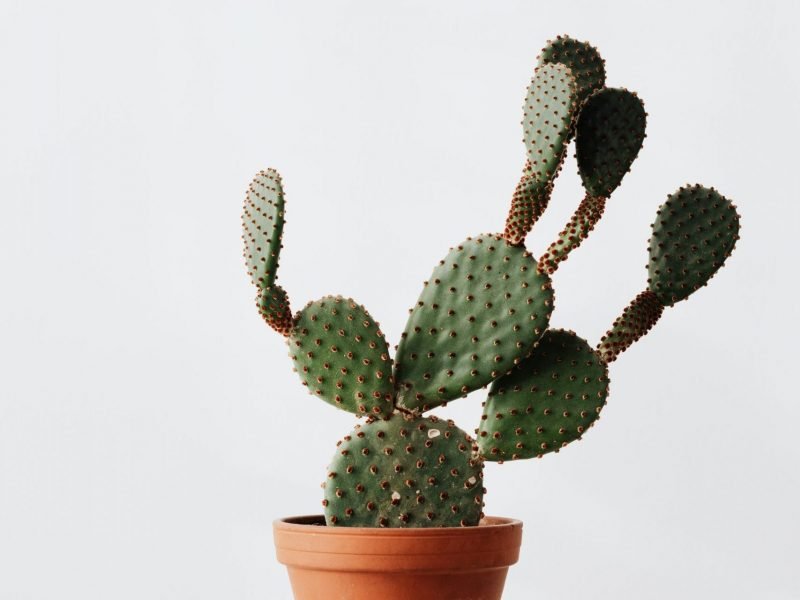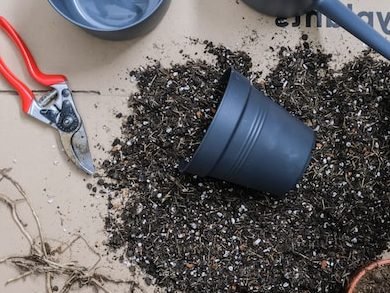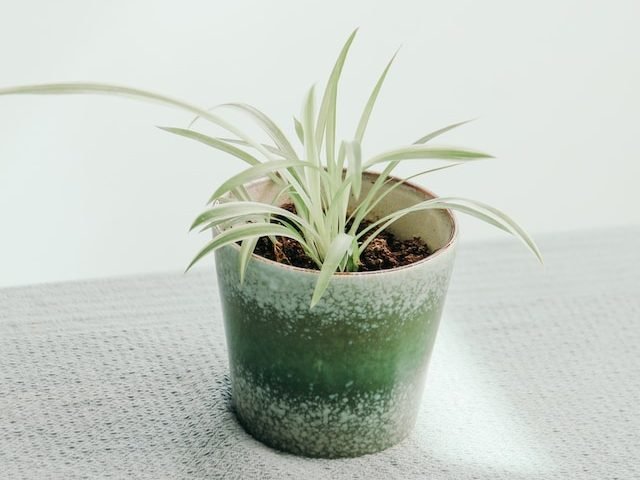
Loved for their flat pad-like leaves, and lack of long sharp spikes, the Bunny Ear Cactus is one of the best plants and cacti types around. However, although they don’t need as much tending to as a lot of other plant types around, this doesn’t mean that they are super adaptable to different environments and care routines. In fact, Bunny Ear Cacti need quite specific conditions to properly thrive and will start dying if things aren’t right.
But don’t worry, we’ve got you covered as in this article we will go through each of the most common reasons why your Bunny Ear Cactus is dying. We will also detail the ways to confirm each issue, treat it effectively and stop it from causing too much damage in future.
Overwatering can cause a dying Bunny Ear Cactus
Overwatering is the main cause of problems across all houseplant types but especially for Cacti. This is why we always start with it as the first port of call when looking to diagnose an unknown issue. Bunny Ear Cacti don’t like sitting in puddles of water for long periods of time as their delicate roots will start to rot. This can very quickly cause your Bunny Ear Cactus to start dying, unfortunately. Not only will the root system be damaged and rotten, but the leaves will turn soft and the pads will often fall over.
To figure out if overwatering is the reason your Bunny Ear Cactus is dying, check the moisture levels in the soil immediately. If the soil is quite waterlogged and clumpy then replace it with fresh dry mix which will allow your Cactus to start the recover process. Letting the potting mix dry out naturally only risks more damage to an already dying plant. Trim away the rotten roots (these will be black and dark brown in colour and feel soft to touch) and hold off on watering as frequently as you did before.
Due to the damage to the root system, your Bunny Ear Cactus may take a little while to fully recover and grow new healthy leaves. But be patient and you should start to see your Bunny Ear Cactus looking fresher in a few weeks.
To prevent the issue from happening in future, you want to cut back on the frequency of watering. Cacti are great water storers so like to be watered deeply but infrequently. Once a month during summer and every 3 months during winter will suffice but you may need to adjust depending on your specific Bunny Ear Cactus and its environment.
A dying Bunny Ear Cactus can indicate drainage issues
Sometimes it may not be your watering schedule that is causing your Bunny Ear Cactus to begin dying on you, but the poor draining of the soil and pot. If any excess water can’t escape from the pot then it can begin to rot the roots.
You can very easily increase the amount of drainage in your Bunny Ear Cactus by mixing in a small amount of perlite, this will make it far easier for water to flow through and out of the drainage holes of your pots (you should also check to make sure your pots have drainage holes). Most cacti and succulent potting mixes will have perlite in them so just check the packaging. Alternatively, you can purchase it separately and add it to the soil yourself.
Another easy step to aid drainage and prevent your Bunny Ear Cactus from dying is to add a few small stones or pebbles to bottom of your pots, this helps in making sure that the drainage holes are never blocked by soil or any loose debris.
Although clay or terracotta pots can be a little bit more expensive or breakable, they are great for cacti and a lot of other plant types. Because they are permeable, excess water can escape out of the sides of the pot. So sometimes it is worth investing a little more to make sure that the roots of your Bunny Ear Cactus are not sitting in too much moisture causing them to start dying.
Cold temperatures may also be to blame
Bunny Ear Cacti don’t so so well with constant streams of cold air. Whilst they can deal with cold nights due to their native environments, constant drafts from outside or air conditioning vents can start to cause real havoc.
The best thing to do to revive your dying Bunny Ear Cactus is to move it to a warmer area of your home and monitor how the temperature changes throughout the day and throughout the various seasons using a digital thermometer. You are looking to reach their ideal range of 72 degrees Fahrenheit (22 Celsius) during the day (of course it will drop a little at night). Make sure to measure the temperature next to your plant as what it says on your home thermostat isn’t always reflective if there are small drafts.
A dying Bunny Ear Cactus can also mean high humidity
In the houseplant world, you will often hear of issues being caused by low humidity levels. However, with the Bunny Ear Cactus, it is actually the opposite that might be causing it to die. If the humidity level is too high, then the pads might start to rot and become quite soft.
The best thing to do here is to use a humidity monitor to check the level around your Bunny Ear Cactus and relocate it if necessary. Places such as bathrooms and kitchens often have a higher humidity level that isn’t ideal for your Bunny Ear Cactus and might be why it is dying.
Those are the most common reasons why your Bunny Ear Cactus is dying. Regardless of which is causing problems with your plant, the main thing is to act quickly.
If you are already seeing visible signs of your Cactus dying, then it means the issue has been progressing for some time. Don’t wait for waterlogged potting mix to dry or think it won’t be long until the temperature in the room increases in summer as this extra time might mean your Bunny Ear Cactus can’t be revived.
Once you’ve made some changes to the care or environment, then it’s important to keep a close eye on your Cactus over the next few weeks to make sure things are progressing in the right direction.
To learn more about how to keep your plant thriving, check out our Bunny Ear Cactus care guide.















